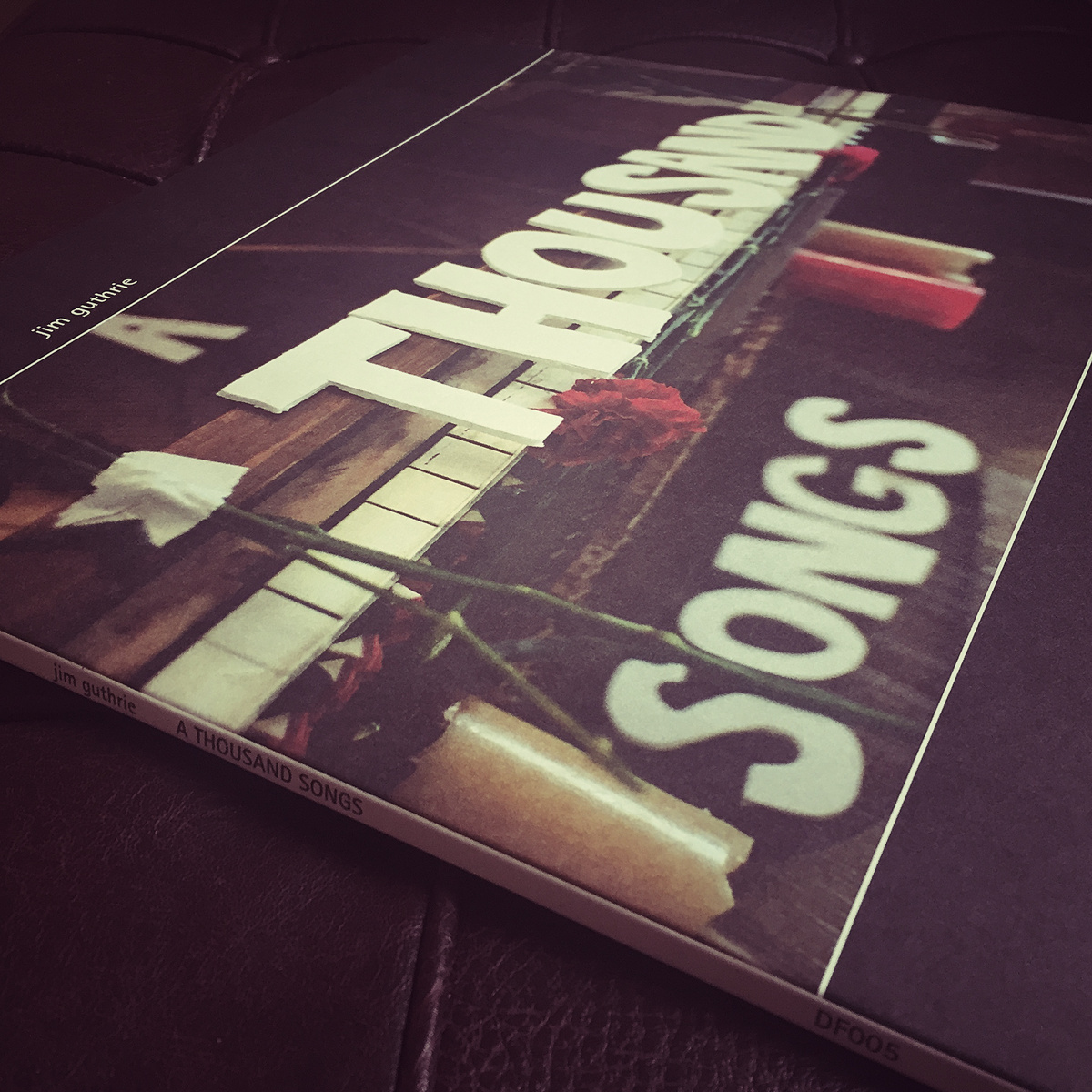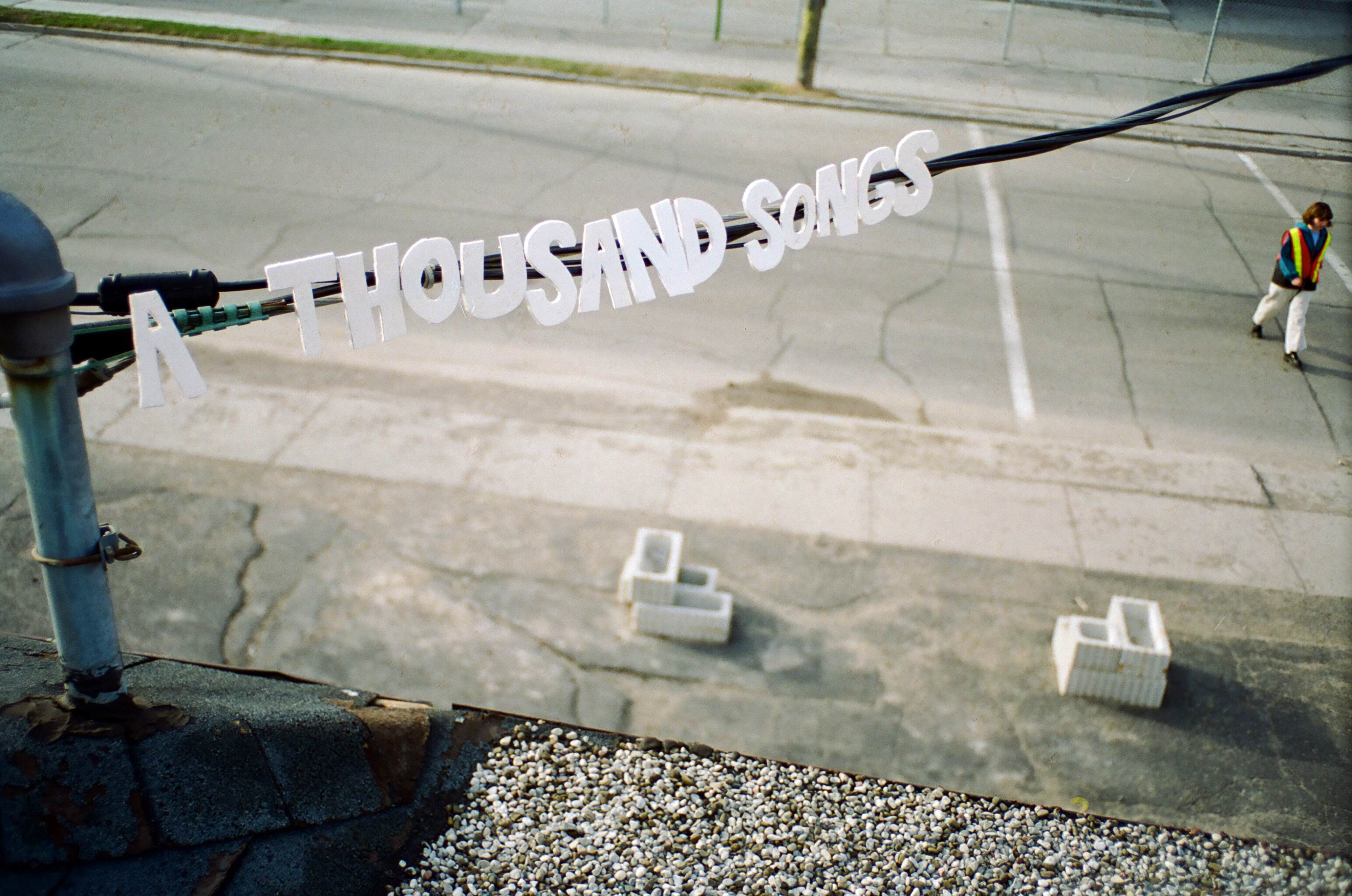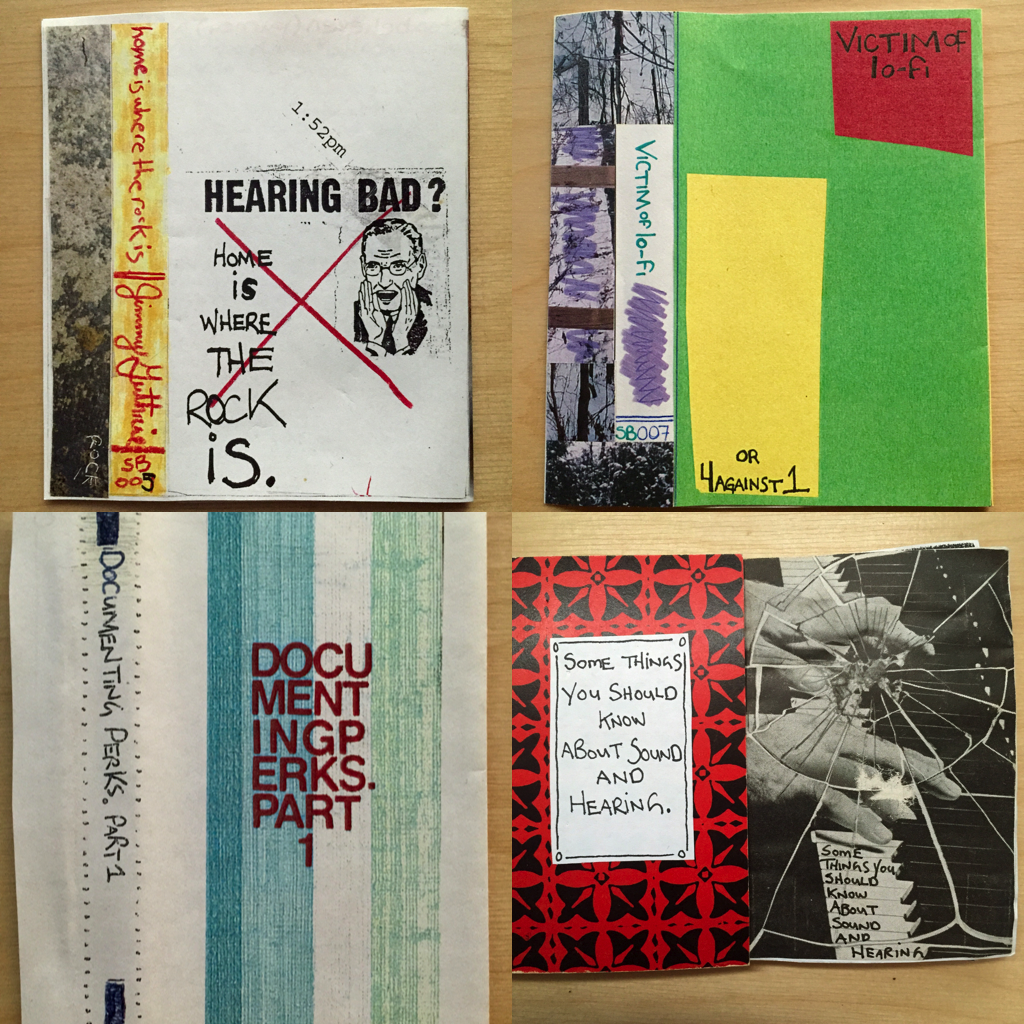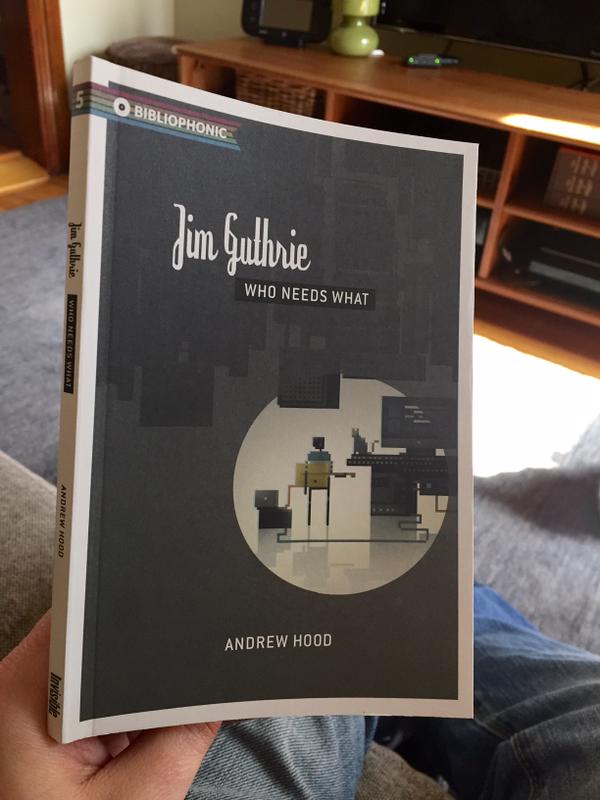 Double vinyl reissue available now on Bandcamp
Double vinyl reissue available now on Bandcamp
I've left this to the last minute but deep down I know it's was kind of on purpose. I'm officially rereleasing a lot of (mostly old) music and it's kind of overwhelming. It's a lot of music (5 or 6 hours) that no one asked for but if there was ever a time I should do this - it's now. It's also just a little confusing (even for me) to try and explain and package it all into a tasty little sammich that's easy to digest. Maybe it's not confusing. Maybe it's just the over 20 years of thoughts and emotions that surround it all. Either way I'm going to give this little sammich a shot and I've asked a couple people to help me explain so let's get started.
 Alt album cover pic taken in 1998-ish
Alt album cover pic taken in 1998-ish
The first thing I want you to know about is I'm reissuing my first CD, A Thousand Songs on double 180g vinyl. I've also recorded 11 new versions of songs found on this record (digital only) and I'm super exited it's finally on vinyl.
One of the reasons it seemed like a good time to reissue is because I've also had a book written about me (!?) which perhaps gives this album greater context. It also explains the fact this album was made up 4 previous cassette releases that not many people have heard. It was 20 years ago this summer that I released my first cassette and to celebrate that I'm also releasing these 4 cassettes on Bandcamp as a pay-what-you-can thing. Oh and the book also has a mix tape that comes with that also acts a companion to the book that I've also made available for free download HERE. So do you follow? Let's take it one at a time:
The Reissue
 Another alt cover idea
Another alt cover idea
So yeah this album was sort of a "best of" my previous 4 cassettes (which I'll get to in a second) with some other (at the time) unreleased stuff. There's so much I could say about this but I've got things to do so I asked my good friend, Michael Barclay (who's also interviewed in the book) to say a few words about it. He reviewed A Thousand Songs in Exclaim magazine when it came out in 1999 and he's been a fan ever since. He's managed to sum a lot of what I'm trying to say here - but way more awesomer:
Jim Guthrie released his first cassette 20 years ago. I was living in Guelph, Ontario, and had a campus radio show; so did he. He was friends with Aaron Riches and Nathan Lawr and Nick Craine; so was I. But we didn’t know each other, and I didn’t know his music. Then I heard 1999’s A Thousand Songs, which compiled tracks from four self-released cassettes. Now, of course, the world has recognized the genius of Jim Guthrie, a book has been written about him (Who Needs What, by Andrew Hood, out this month on Invisible Publishing), and the label that was formed to release A Thousand Songs, Three Gut Records, is universally acknowledged as a catalyst to the sea change in Canadian music that made the likes of Broken Social Scene and Arcade Fire possible (both those bands—of course—are big Jim Guthrie fans).
But at the time, I thought something along the lines of: “Who is this time-frozen freak who wants to stay home and listen to Mel Tormé, rides bikes without chains halfway around the world, and has dreams of dirty fingernails? The guy who’s as ridiculous as Ween but as heartbreaking as Elliott Smith but with more bottom end and soul than either (“shit yeah, I can dance”), is he some kind of lo-fi Lindsey Buckingham hooked on video games, subsisting on a diet of something known only as “curry toast”? Is this what would have happened if Paul McCartney ditched Wings to join German weirdoes Can? Did some tracks from a Ry Cooder soundtrack for Wim Wenders get thrown on here by mistake? Seriously, what the fuck is going on? There’s no way this could be the sound of a small-town guy who only picked up a guitar a year or two ago.”
And yet it was. And it was magical. And it was leaps and bounds ahead of anyone I’d heard in Guelph—or anywhere else. “Hey there, High Fidelity record-store clerks, I see your Beta Band’s Three EPs and I raise you A Thousand Songs. Get ready to fold.” Before I heard Guthrie’s music, I assumed his pals were hyperbolic when they hyped his genius, or were at least merely using the local teen punk scene as a low-bar benchmark. They weren’t.
There are tracks on A Thousand Songs where Guthrie sounds like Carl Sagan trapped in a black hole with Blade Runner synths swirling around him, or perhaps like one of Alvin’s chipmunks fucking around with a toy piano. There are times when he gets downright slinky (“Sexy Drummer,” “Wear in the World”) and even freaks out for the DJ booth (“Focus on Floor Care,” which could have been a 12” on Ninja Tune). Some tracks should be on a Hal Hartley soundtrack. Or Friday Night Lights. Many are full of interruptions: a phone ringing, the sounds of schoolkids next door, even a toilet flushing. A Thousand Songs conflates tiny moments of perfection and imperfection and dares you to tell the difference. It’s profound and profane. Most of all, it’s profoundly curious. Sometimes it’s just a guy screaming into a crappy microphone: “Wama-lama-ding-dong-wooooo-EEEEEE—woooo!!!!” Much like life itself.
Since then, Guthrie has released three more proper albums (Morning Noon Night, Now More Than Ever, Takes Time) and written plenty more material for ad agencies (“Hands in My Pocket”), indie films (Indie Game: The Movie), and odd collaborations (the most high-profile being Human Highway, a duo with superfan Nick Thorburn of the Unicorns and Islands). His work for video games like Sword and Sworcery have introduced him to a whole new audience; old fans will be surprised to learn that his gaming work is infinitely more popular than any of these classic albums he’s re-releasing now.
To celebrate the 20th anniversary of his first cassette—which included “I Don’t Wanna Be a Rock Star”—Guthrie is giving A Thousand Songs a re-release on 180-gram double vinyl with updated artwork. But that is not all—oh no, that is not all. With it comes a Bandcamp download code for 11 new re-recordings of songs from the album, made with his current live band and recorded by long-time confidant Andy Magoffin. This summer, Guthrie will also make available on Bandcamp all four of his early cassettes (only some of the material made it onto A Thousand Songs): Home is Where the Rock Is, Victim of Lo-Fi, Documenting Perks Part 1, Some Things You Should Know About Sound and Hearing). Finally, Who Needs What author Andrew Hood has compiled his own mix tape as a companion to the biography, available as a download with purchase of the book: it’s a career-spanning mix of Guthrie’s greatest non-hits of the past 20 years, including a full version of his Capital One ad, Hands in My Pocket, never before available. Indeed: who needs what? Take what you want, take what you need.
Twenty years on, A Thousand Songs no longer seems like such an aspirational, grandiose title after all.
The Cassettes
 All four cassette covers released from 1995 - 1998
All four cassette covers released from 1995 - 1998
So yeah like I've already mentioned this summer will mark the 20th anniversary of the first cassette I ever released called Home Is Where The Rock Is. I would never call it an album because it was 60 minutes of me fucking around in my basement but it was a big deal to me at the time. It was just a local release (100-ish copies) and I never really thought of myself as a "recording artist" or a "singer songwriter". I was too wrapped up in learning more about where it might take me and coming out of a shell that that my childhood had put me in.
I then released a cassette every year for the next 4 years - Victim of Lo-Fi, Documenting Perks Pt1 and Some Things You Should Know About Sound and Hearing. They were all kind of a mess. They were the sonic manifestation of over sharing. It was me finding myself and recording almost every idea and musical breakthrough I ever had. Sort of like when a proud parent takes 4 million pictures of their kid transforming from an uncoordinated blob of flesh to a walking and talking little person. I use this comparison because I realize that at times the music on these cassettes is just as boring and ubiquitous as all the babies that ever learned to walk and talk but it's none the less, my story. I could also go on forever about this time in my life but again, I gotta eat and poop and stuff so I had Andrew Hood, the author of my bio, 'Who Needs What' to write a something about it instead:
If you were in and of Guelph in the 90s, you probably know about these four tapes: Home Is Where The Rock Is, Victim of Lo-Fi, Documenting Perks Part 1, and Some Things You Should Know About Sound and Hearing. Maybe you owned them at one point and have subsequently misplaced them over years of moving house, or you accidentally left them to melt on your dash and are still kicking yourself, or you’re a preservationist/hoarder and still have them but don’t have a deck in which to jam those Jims. If any of the above is the case, then you’ll probably not want or need to read anything some random dude has to say about said tapes. Probably you’ll want hop into the time machines that they are and blast back to the halcyon time and the place you were first listening to them. Thanks for reading this far.
But if these tapes are news to you, if you come to Jimmy Guthrie through his soundtrack work, or his high-pop-water marks, then a bit of context might be helpful. To begin to fully appreciate what these tapes are and where they come, we’ve got to back to – bear with me – the twilight of the 19th century:
At the dawn of the technology, the pioneers of sound recording had differing opinions about what exactly they meant to capture. What kind of literal record were they making? Was it the live performance that they were documenting or was it the piece itself? With the former as the goal, the time and the place and the performer should be secured, blemishes and boners and all in an unaltered reflection. Favouring the latter, though, fidelity would be to the piece of music itself, to creating a sort of ideal version and an ideal space. Over a century of sound being gouged into wax, or being zapped onto magnetic tape, or converted to 1s and 0s, recording has mostly sought perfection. These days, records are rarely those literal records anymore, but more craft than performance.
Thanks to further monkeying by the likes of Les Paul, the original catchall recording techniques opened up to recording multiple tracks, so the live-ness of a recording could be fudged. One person could jam with herself all of sudden. Building on this newfound freedom, recorded music moved further away from being conventionally live, producing early tall poppy examples like The Beatles, who strove to create music in the recording studio that had no relation to live performance. As the technology got more slick, became more digital and less analog, capturing a live performance became less important. The song became more built than performed, sort of in the same way that oral storytelling was gradually corralled into structured, honed narrative prose.
But as mainstream music embraced this sonic perfection, a subset of artists eschewed polishing all together, for both economic and artistic reasons embraced a type of record-making much closer to that original avenue of document making, of making a record of a time and place and people, and the unique result of those convergences and combinations. An offshoot of the DIY punk surge of the late 70s and early 80s – more recognizably kin in spirit than sound necessarily – this type of scrappy, basic music-making could be done by anyone. The making became more important than the product. Just so we don’t get too soaked in specifics, we’ll pop up the lo-fi umbrella over this movement.
These four early Jim Guthrie records are record-records. Put to tape between 1992ish, when Jim had only been playing music in his basement for a few years, and 1998ish, when he had become something of a figurehead in the local music scene of Guelph, Ontario – this is between the ages of about 19 til 25 – these are documents of personal, creative, and technical growth. But they also double as a record of a specific time and place, of the maturation of a sound and an experience of that mid- to late-90s home rock movement in Guelph, Ontario, Canada.
Recording for Jim started out as just a literal record his progress. Any time he successfully transitioned from a D to C chord, he’d hit record on the pink boombox he started out with. Eventually, he got a Fostex X-18 4-track, which would allow him to, as the name implies, record 4 tracks of himself. Now that every Mactop comes with GarageBand, it might be a bit difficult to understand how revolutionary home recording technology like the 4-track was. They amounted to a pretty cheap learning tool, offering a fairly idiot-proof way to break down songs are learn how they’re constructed. For the most part, they’re a tool for demoing songs, sketching them out, before heading to the studio to create that perfect version. But early stand-out lo-fi acts like Sebadoh, They Might Be Giants, Pavement, and Ween set a precedent for having the moment of creation come as close as possible to the final product. Lo-fi elevated the learning and fumbling process, argued that an original sketch is as good, if not better, than the final painting. So yes, Jim is sloppy and awkward on these early albums, though less and less so, but working in that lo-fi comfort zone, there’s an aplomb to that inelegance. If nothing else, listen to these albums for that gusto.
Like a lot his lo-fi contemporaries, Jim is all over the map on these tapes, experimenting with random instruments and random genres, throwing anything he can get his hands and interest on at the wall to see what’ll stick. when you’re working with the idea that there’s a worth to everything you try, this permission gets created to try anything you want. With this in mind, these four tapes become a sort of Cradle of Civilization for Jim’s career. These tapes are full of tangents and tests, of Jim trying a little bit of everything. He doesn’t always succeed, but he often does. I’m no rock doctor, but I’m willing to diagnose Jim’s continued success as a product of his adaptability. Over the time period of these albums, Jim tries a bit of everything: field recordings, pop songs, jingles, slow-burn post-rock, noise collages. In his twenty years of making music, Jim’s dipped his creative wick into a bit of everything. If you’re a fan of a particular instalment of Jim’s many interests, you can find the early, primordial experiments on these tapes.
Read the rest of his piece HERE
The Book
If you're still reading at this point then I should really buy you a beer. Last but not least we have my first (and probably only) biography - Who Needs What by Andrew Hood and published by Invisible Press. I am super grateful for what Andrew has managed to pull together for this book. I recently tried to express my gratitude in a wee Twitter rant and this is what I had to say:
(1/17) I'm very grateful for this document. I'd like to thank all who contributed but first, a little context. #feelings
— Jim Guthrie (@jampants) April 15, 2015
(2/17) When I was first asked to take part in the book my first (internal) reaction was….well…no. #fear
— Jim Guthrie (@jampants) April 15, 2015
(3/17) Many things go through your head when someone asks you to be the subject of a bio. Lots of questions (why? etc) but mostly fear.
— Jim Guthrie (@jampants) April 15, 2015
(4/17) Fear of the unknown. Fear of what that particular mirror might reflect if you don't fancy what you see. #troof #narcissus
— Jim Guthrie (@jampants) April 15, 2015
(5/17) The author, @Andrew_N_Hood was mostly a stranger when he proposed the idea. #donttalktostrangers
— Jim Guthrie (@jampants) April 15, 2015
6/17) He even admitted that he didn't really know how it was going to turn out. He only knew that he wanted to give it go. #thatsthespirit
— Jim Guthrie (@jampants) April 15, 2015
(7/17) In that moment I knew it was really just a matter of trust. Do I trust this guy? If yes then all fear / questions matters less #trust
— Jim Guthrie (@jampants) April 15, 2015
(8/17) So I do and he did and here we have a book. #easypeasy #thankyouandrew
— Jim Guthrie (@jampants) April 15, 2015
(9/17) He interviewed a lot of people from my life / career for this bio and strung it all together quite poetically IMHO. #thisisyourlife
— Jim Guthrie (@jampants) April 15, 2015
(10/17) Aside from a potential spit shine of the ego I never thought I would be as moved as I was to read his findings #herecomethefeelings
— Jim Guthrie (@jampants) April 15, 2015
(11/17) A crippling amount of good nature was thrown my way and it's enough to make a grown man weep. #holdme
— Jim Guthrie (@jampants) April 15, 2015
(12/17) Simply put it was an overwhelming reminder of so many things. #people #life #beauty #music #haircuts
— Jim Guthrie (@jampants) April 15, 2015
(13/17) Let me end this with a sincere thank you to all who contributed and beyond. It's meant a lot #bigbiglove
— Jim Guthrie (@jampants) April 15, 2015
(14/17) Not all interviewed made the book and some of you don't have Twitter accounts (get with it) but THANK YOU!!!
— Jim Guthrie (@jampants) April 15, 2015
(15/17) @theartcounsel @sarah_harmer @OurFounders1 @BonheurAllRound @MINOTAURSBAND @NickCraine1 @stuberman @mmmbarclay
— Jim Guthrie (@jampants) April 15, 2015
(16/17) @owenpallett @NickfromIslands @Disasterpeace @Failgunner @salexanderevans @robotandproud @lisannepajot @jamesswirsky
— Jim Guthrie (@jampants) April 15, 2015
(17/17) @ahmmnd @RMWmusic @MrTimothyK @evandclarke @darcielee @colinbdclark @LemonOuest @CAPYGAMES @vishkhanna @thingsbydan
— Jim Guthrie (@jampants) April 15, 2015
Extra shout out to @superbrothersHQ for doing the book cover! #xo
— Jim Guthrie (@jampants) April 15, 2015There is really so much more to say about all of this and so many more people to mention and thank but I should really go feed the cats. xojim
